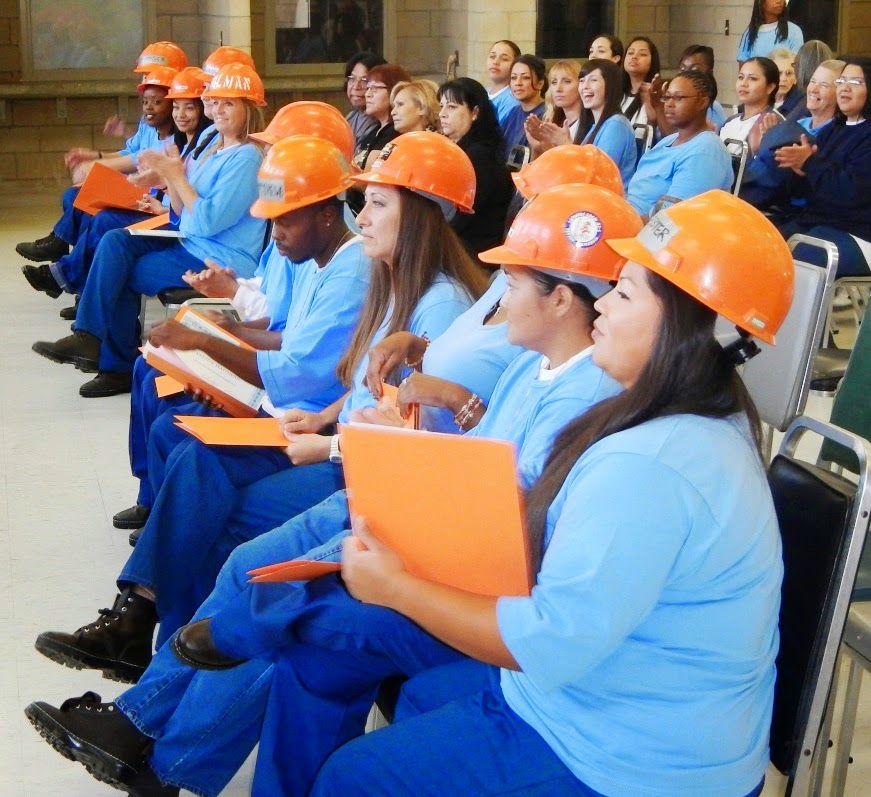Story, photos by Michele Kane, Chief of External Affairs
California Prison Industry Authority
Offenders from the California Department of Corrections and Rehabilitation and the California Prison Industry Authority (CALPIA) are giving back more than $97,000 to various crime victims support groups throughout the state.
The offenders are participating in the Joint Venture or Free Venture Programs at four institutions statewide.
“The Joint and Free Venture Programs are models of public-private partnerships, benefiting businesses, crime victims and the state while preparing inmates for successful integration into the community,” said Charles Pattillo, General Manager of CALPIA. “One of the main purposes of Joint Venture is to provide inmates with the essential job skills that will allow them to get jobs after their release.”
The Joint Venture Program is provided at adult institutions and the Free Venture Program provides work experience at juvenile facilities.
Offenders are paid wages comparable to what they would earn if they were working in the respective field outside of prison.
Federal, state and local taxes are withheld from an offender’s gross earnings, and 20 percent from each category is deducted from an offender’s wages: room and board, inmate trust/canteen account, family support, mandatory savings and victims’ compensation.
The collected restitution is placed in a “Generic Restitution Fund” for local crime victim organizations.
Institutions making donations:
What is CALPIA?
The California Prison Industry Authority is a self-supporting, customer-focused business that provides productive work and skill development opportunities to offenders to reduce recidivism, increase public safety and prison safety, according to the organization’s website. Learn more at http://pia.ca.gov/
California Prison Industry Authority
Offenders from the California Department of Corrections and Rehabilitation and the California Prison Industry Authority (CALPIA) are giving back more than $97,000 to various crime victims support groups throughout the state.
The offenders are participating in the Joint Venture or Free Venture Programs at four institutions statewide.
 |
| San Quentin inmates donate to victims groups. |
“The Joint and Free Venture Programs are models of public-private partnerships, benefiting businesses, crime victims and the state while preparing inmates for successful integration into the community,” said Charles Pattillo, General Manager of CALPIA. “One of the main purposes of Joint Venture is to provide inmates with the essential job skills that will allow them to get jobs after their release.”
The Joint Venture Program is provided at adult institutions and the Free Venture Program provides work experience at juvenile facilities.
 |
Central California Women’s Facility inmates donate to victims groups. |
Federal, state and local taxes are withheld from an offender’s gross earnings, and 20 percent from each category is deducted from an offender’s wages: room and board, inmate trust/canteen account, family support, mandatory savings and victims’ compensation.
The collected restitution is placed in a “Generic Restitution Fund” for local crime victim organizations.
Institutions making donations:
- Central California Women’s Facility in Chowchilla - Offenders in the Joint Venture Program, Allwire, Inc., donated $59, 966.35 to Mollie’s House and to the Community Action Partnership of Madera County.
- San Quentin State Prison – Offenders in the Joint Venture Program, Labcon donated $31,089.42 to the Alameda County Family Justice Center and to A Safe Place, Inc.
- N.A. Chaderjian Youth Correctional Facility in Stockton – Through Merit Partners, offenders donated $4, 518.04 to the San Joaquin County District Attorney Victim/Witness Program.
- California Correctional Center in Susanville – Offenders in the Joint Venture Program, Five Dot Land and Cattle Company, donated $1,636.53 to the Lassen County Victim/Witness Assistance Center.
What is CALPIA?
The California Prison Industry Authority is a self-supporting, customer-focused business that provides productive work and skill development opportunities to offenders to reduce recidivism, increase public safety and prison safety, according to the organization’s website. Learn more at http://pia.ca.gov/


























